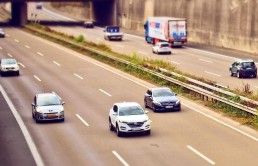Despite what some people believe, the black box inside your car doesn’t serve up a steady stream of data to some overlord who’s tracking you. It’s there as a benefit. With the data collected from black boxes, safety analysts and accident investigators can evaluate how cars perform in crashes and ultimately design safer cars.
The black box – or more technically, Event Data Recorder (EDR) – is a small computer in your car that stores data before and during a crash. Its main requirement is ultimate durability in order to preserve data integrity. To this end, the case enveloping this small computer is made of hardened steel that can withstand a variety of crash conditions. Plus, all the electronics and hardware inside must meet durability and performance requirements.
The type of data collected by the EDR depends on your government’s regulations and the level of automation of your car. Vehicle speed, braking, engine RPM, location, radar, LIDAR, and video streams from various cameras are just a few examples of the event data possibly stored inside EDRs. With all this data at hand, accident investigators can piece together the details of the incident. They can tell whether defensive maneuvers were taken, like braking and throttle decrease, or if there were other vehicles or objects in the proximity.
But how does the black box preserve the data so investigators can retrieve and analyze it?
What goes on inside the box
First, the EDR needs to know when to start recording and save crash data. Some EDRs record the data continuously until the power is cut (for our purposes, this means a crash occurred). Other EDRs are triggered by sensors that detect crash-like events, such as sudden changes in wheel speed.
Just like a computer, the EDR has some basic elements needed for storing data: memory hardware to hold the data, file system software to save the data in a standardized format, and an operating system (OS). The OS is the interface between the various sensors outside the EDR, and the file system and memory hardware inside the box.
The primary memory hardware inside today’s EDRs is typically a flash memory chip, such as eMMC (embedded multi-media controller) or UFS (universal flash storage), or sometimes an SD card. The operating systems used in EDRs are typically real-time operating systems (RTOS) or Linux.
So how is the data saved during a crash?
Working in between the OS and the hardware, a file system saves the data to the memory. When the sensors detect a crash event, the operating system instructs the file system to get to work! In a matter of milliseconds, the file system neatly organizes and structures all the incident data onto the memory hardware in a standardized format.
After an incident, an investigator can connect the EDR to a laptop to see what data was stored. The file system software on the investigator’s laptop would interface with the corresponding file system software on the EDR, and thus the data would be easy to find and sort through.
What file systems are used on EDRs?
The most common file system found on EDRs running RTOS is FAT (File Allocation Table), because it’s designed for simple folder structures – which suits RTOS well. It’s not the best file system for handling video data, however, because the file size with FAT is limited to 4 GB. Lengthy, high-quality video files, such as those saved in a continuously recording EDR, will easily exceed that limitation. exFAT (Extended File Allocation Table) would be a better choice of file system in this case because it can handle large file sizes. For Linux-based EDR systems, FAT, exFAT, and ext4 (fourth extended file system) are the most commonly used file systems.
How file systems make a difference in EDRs
There’s an issue with these tried-but-true file systems, however. They were designed for decades-old hard disk drive (HDD) memory technology. And as I explained above, modern cars use flash memory technology in the EDR. Flash memory has some unique challenges, such as degradation over time. As it turns out, the file system can play a large role in flash memory degradation. Especially for Linux-based EDR systems, we recommend a flash-friendly file system that reduces the factors leading up to memory degradation, such as Fusion File Share by Tuxera (formerly Tuxera SMB).
Final thoughts
To sum up, the black box’s reason-to-be is to preserve a very precious cargo according to our modern-day terms: data. The file system inside plays a major role in that function – ensuring the data is intact and easily accessible after an incident. Once data has been analyzed, we get a broader picture of all the various crash scenarios and conditions, and vehicle performance under those conditions. In turn, governments and car manufacturers get valuable information to pass better safety regulations and make safer cars for everyone.


